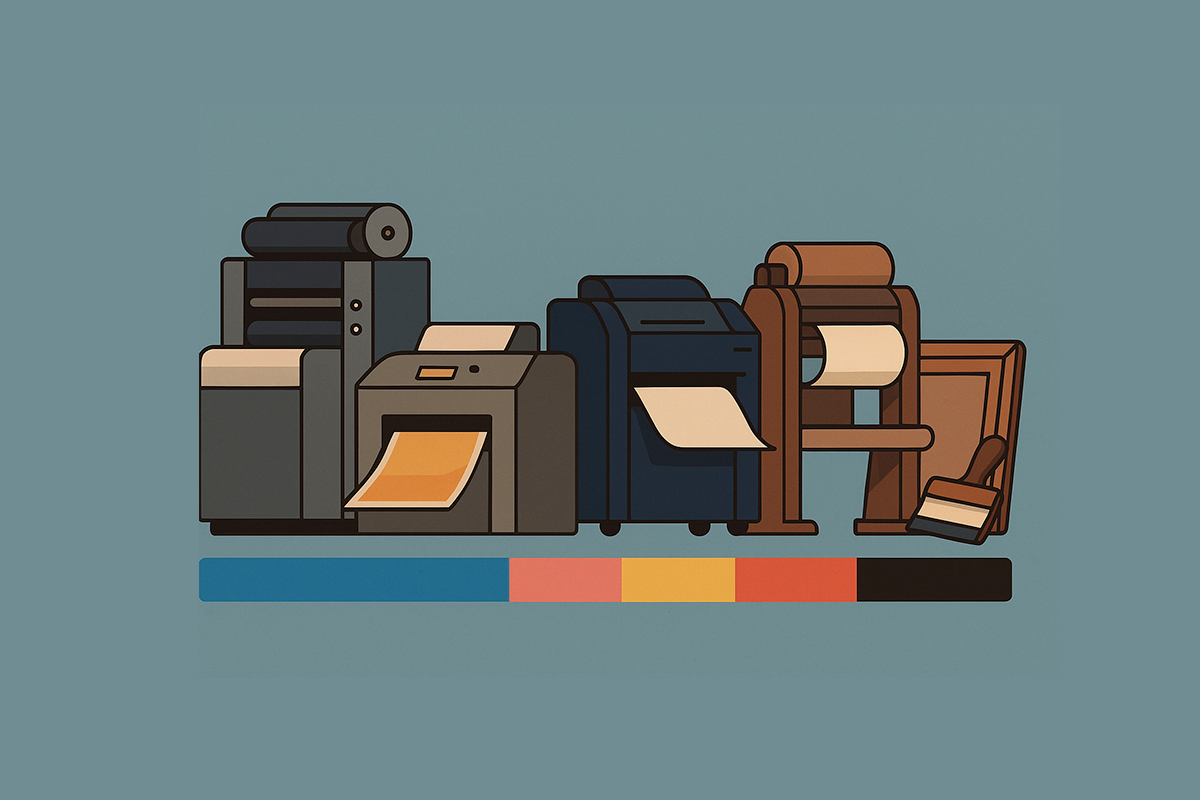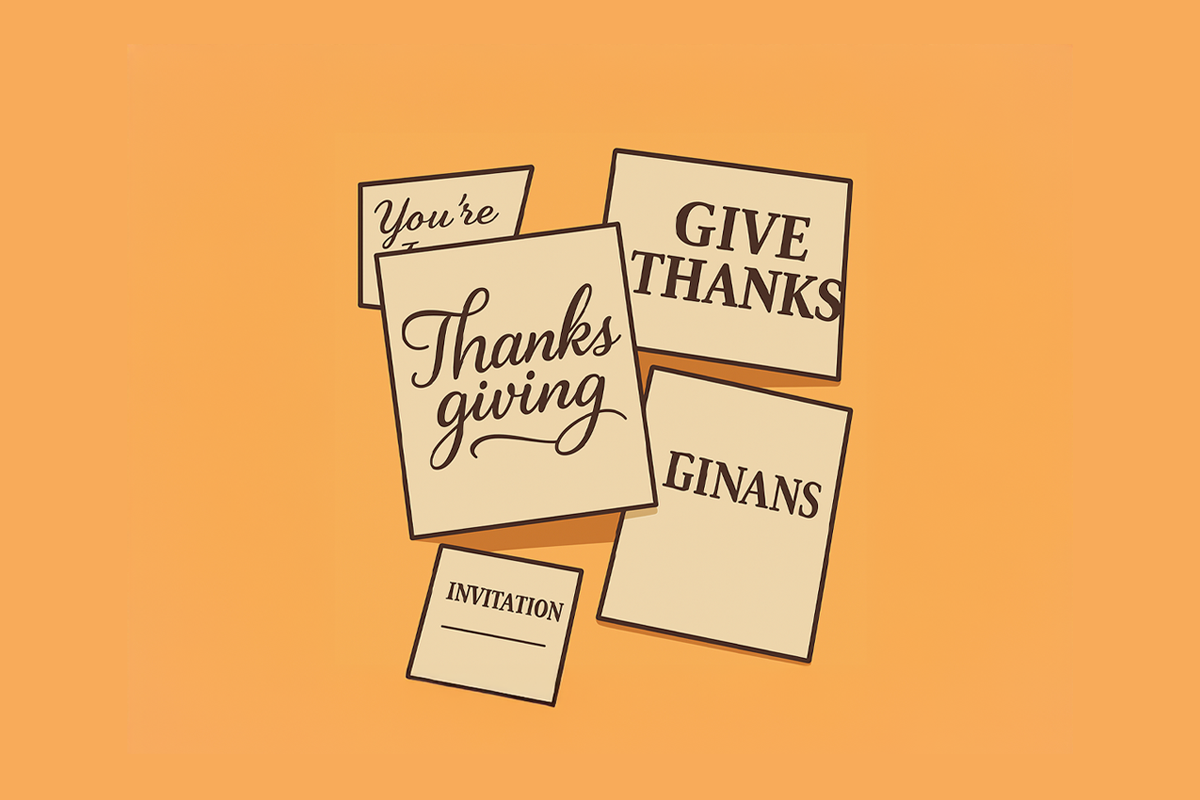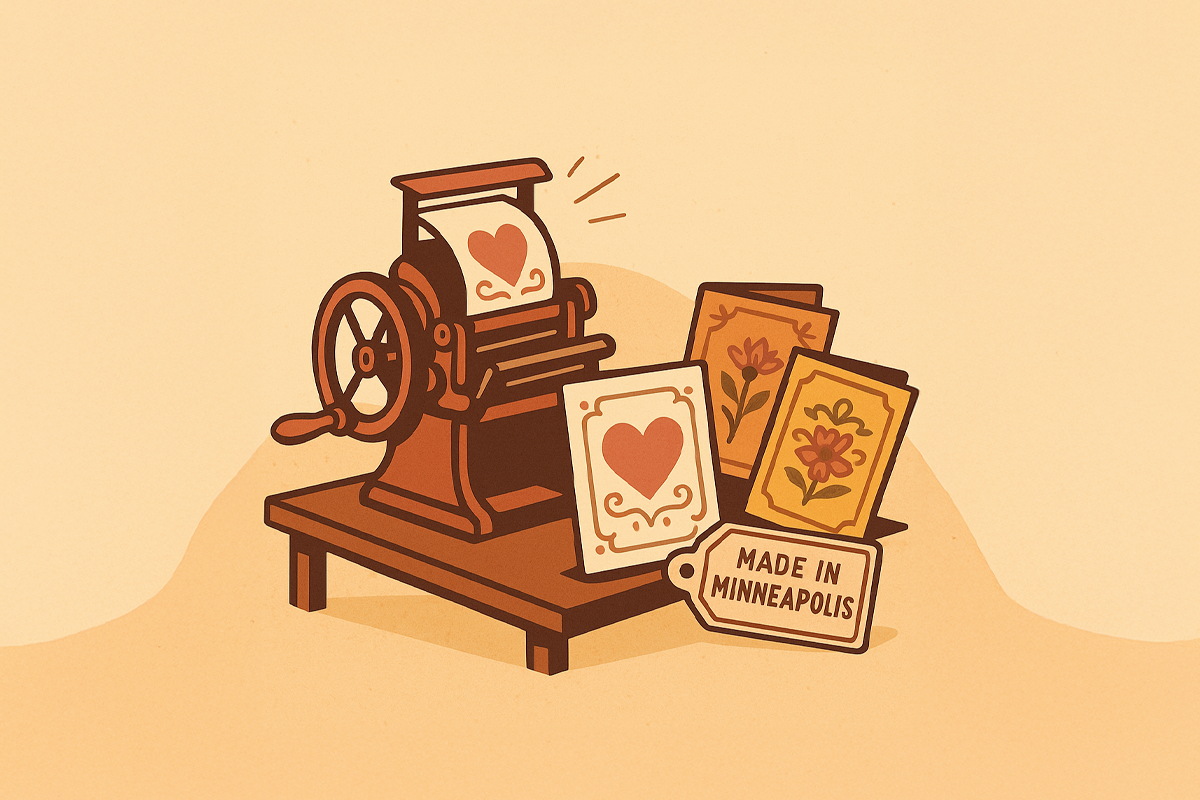What Types of Printers Are Used in Commercial Printing?
Learn about the most common types of commercial printers, from offset to digital to flexo - and how each supports high-quality, high-volume printing needs.

There are a number of different commercial printing methods still commonly used today. Understanding the differences between them can help you make more cost-effective decisions for your print materials. This blog outlines the unique strengths of each technology and explains how its utility varies depending on factors like the size of the print run, format, design complexity, and use case. Ultimately, we want you to feel empowered to choose the best technology for your job and find a print partner capable of delivering the results you’re looking for on your terms.
Offset Printers
Also referred to as offset lithography or litho, offset printing is the gold standard for high-quality, high-volume printing. It requires a higher upfront cost to produce custom lithography plates, which typically makes small runs more expensive. However, it also uses less ink per print than its main competitor, digital printing. That means that, after a certain number of pages, the price-per-print for offset printing drops below the price-per-print of digital, and will continue to drop as the print run size increases. This tipping point varies from project to project and printer to printer, but often starts somewhere around the 500-copy mark.
Offset printing also supports two different methods of paper handling: sheet-fed and web-fed, also referred to as web press. While both produce prints quickly and accurately, sheet-fed tends to be preferred when quality is paramount. This is because it can handle a wider variety of paper types and thicknesses, as well as more print finish options. On the other hand, web-fed printing tends to go faster, making it popular for high-quantity print runs and products with higher page counts.
Digital Printers
Digital printing offers a similar level of print quality as offset printing, without requiring the creation of printing plates. This means that, despite using more ink per print, it’s often a more cost-effective choice for small quantity print runs. It’s also compatible with ‘variable data printing’, which is the process of adding individualized content to each print. This is a particularly time and cost-efficient technique for adding addresses to direct mail, names to welcome kits, etc.
Inkjet Printers
Inkjet printers are a subcategory of digital printers that use nozzles to spray tiny ink droplets onto the page. This differs from laser printers that use toner, static electricity, and rollers to create a print. Inkjet printers have become a particularly popular choice for printing large-format products such as signs, posters, banners, and POS displays.
Flexographic Printers
Flexographic printing uses flexible plates mounted on rollers, quick-drying inks, and long continuous webs of print substrate to produce prints extremely fast, but with less detail than offset or digital printing. It’s best suited for reproducing simpler designs on thinner substrates, making it a popular method for printing labels, packaging, and wrapping paper.
Screen Printing
These days, screen printing is best known as a method for printing on fabric, though it can be used on paper, cardstock, and cardboard as well. It uses photopolymer emulsions and mesh screens to create images, with one screen for each color in a design. Thick ink is pressed through the screens to deposit each color layer onto the print substrate. It’s much slower and more labor-intensive than the printing methods we’ve outlined above, but continues to be a popular choice for custom apparel and accessories, high-end art prints, and direct printing on containers such as plastic and glass bottles.
Bonus: Specialty Finishing Equipment
Lastly, we’ll cover specialty finishes as their own category. Print finishing techniques are used to create more complex or high-end print materials. They include:
- Coatings that changes the look and feel of a print, such as metallic foil, UV gloss, and soft touch.
- Custom die cutting that changes the physical shape of the final object, commonly used to create custom packaging and unique print shapes.
- Folding, stapling, and gluing techniques that produce different kinds of bound and creased prints, like booklets and brochures.
Many of these finishes may be achieved in multiple ways, depending on the types of presses a printer is using. One way is via inline technology that’s directly integrated into the printer, resulting in a single print run with no transfers for finishing steps. Another way is via offline technology, where prints are taken from the initial printer and transferred to a separate piece of equipment for finishing.
Still not sure what print method to choose for your project or business? We’re here to help! At Wallace Carlson, we have decades of experience with all types of commercial printing. Whatever your print needs, we can help you determine which methods would work best for your project, optimizing both quality and costs. Reach out to our team today to get the conversation started!
Conclusion
Work that stands out across time and industries
Looking for more insights on print marketing and design? Check out the latest blogs from Wallace Carlson for expert tips, industry trends, and strategies to elevate your brand.



